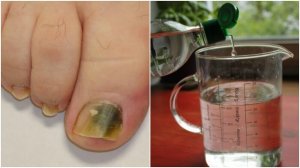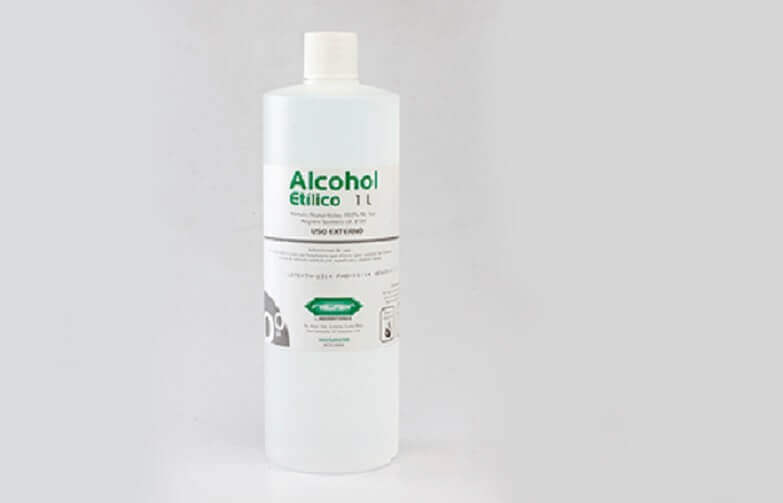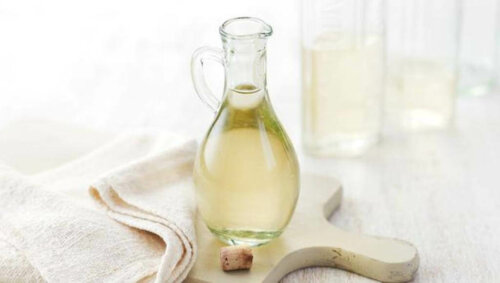A Natural Alcohol Based Remedy Against Nail Fungus


Reviewed and approved by the doctor Karla Henríquez
Proceed with caution and consult your doctor about the best course of action before trying this remedy against nail fungus. Otherwise, it may worsen the problem and make it harder to get rid of.
A doctor should be able to provide the safest and most effective treatment for every case. However, it’s common to hear that people resort to various household ingredients, such as white vinegar.
Home remedies are often used as complements to pharmacological treatment. However, they’re seldom backed by scientific evidence.
This natural preparation based on alcohol is supposed to have antifungal properties and some people are convinced it can help get rid of the pathogens that cause this fungal infection.
Understanding nail fungus
Nail fungus, a condition known as onychomycosis, is caused by the attack of dermatophytes, yeast, or non-dermatophyte mold that spreads rapidly in humid and warm environments.
Although the condition doesn’t show any symptoms in the beginning. However, little by little it’s possible to notice that the nail looks thicker with a yellowish hue and that the surrounding skin looks inflamed. It’s also important to fight the fungus to avoid losing the nail completely.
Three ingredients that’ll help get rid of nail fungus
This remedy is a product for external use with antiseptic and antifungal properties that helps to destroy the microorganisms that cause infections.
Alcohol

To boost this natural treatment, we are going to use 90% ethyl alcohol, the one that’s usually in all first aid kits. It stands out because of its disinfectant and antibacterial effects which prevent the development of infections when applied to wounds.
It’s quite effective against a wide variety of bacteria and fungi, although it doesn’t attack bacterial spores.
Furthermore, it’s used as a complement to treatment against onychomycosis. However, you need to combine it with other ingredients to enhance its attack.
Learn how to Relieve Painful Joints with an Herbal Alcohol Based Ointment
Hydrogen peroxide
Hydrogen peroxide is a natural product that’s used for the disinfection of superficial wounds.
Its antibacterial and antifungal properties are effective in combating fungus on the nails and feet, so it’s often used in nail treatments.
Hydrogen peroxide also helps to diminish the yellowish coloration caused by fungus. Plus, as if that wasn’t enough, it prevents weakening and breaking of the nail.
White vinegar

White vinegar contains organic acids. These alter the environment the microorganisms need to breed, stopping the infection.
Its antiseptic and anti-fungal properties help to fight fungus and prevent the deterioration of the nail.
Read about how you can use Vinegar as a Home Remedy for Dandruff
Remedy to help get rid of nail fungus
To combat nail fungus that’s damaging your nails, combine all the above ingredients in the same single treatment. It’s easy to make, and you can use it regularly until you get rid of it.
Ingredients
- 90% ethyl alcohol
- 5 tbsp. of hydrogen peroxide
- 2 tbsp. of white vinegar
Materials
- 1 glass container
- Cotton
Preparation
- Firstly, pour the ethyl alcohol into a glass container and then mix it with the other ingredients
- Then, cover the container and shake it so that everything mixes well
- Store it in a cool and dry place to keep it in good condition
How to apply
- First, rinse the infected nail thoroughly; then, dry it and rub the treatment on with the help of a piece of cotton
- File the surface before applying the remedy if the nail is too thick and yellow
- Use it twice a day, every day
- Keep in mind that the effects of this remedy won’t be immediate so it’s important to apply it regularly
Patience is important
Getting rid of nail fungus is often difficult, so consulting a specialist is always the best option. In any case, run this home remedy by your doctor and proceed to use it if they approve of it.
All cited sources were thoroughly reviewed by our team to ensure their quality, reliability, currency, and validity. The bibliography of this article was considered reliable and of academic or scientific accuracy.
- Singal, A., & Khanna, D. (2011). Onychomycosis: Diagnosis and management. Indian Journal of Dermatology, Venereology, and Leprology. https://doi.org/10.4103/0378-6323.86475
- Elewski, B. E., Rich, P., Tosti, A., Pariser, D. M. D., Scher, R., Daniel, R. R. C., & Gupta, A. (2013). Onchomycosis: An Overview. Journal of Drugs in Dermatology : JDD.
- Piraccini, B., & Alessandrini, A. (2015). Onychomycosis: A Review. Journal of Fungi. https://doi.org/10.3390/jof1010030
- Carrillo-Munoz, A. J., Peman, J., & Gobernado, M. (1999). Nuevos antifungicos. Presente y futuro. Revista Espanola de Quimioterapia.
This text is provided for informational purposes only and does not replace consultation with a professional. If in doubt, consult your specialist.








